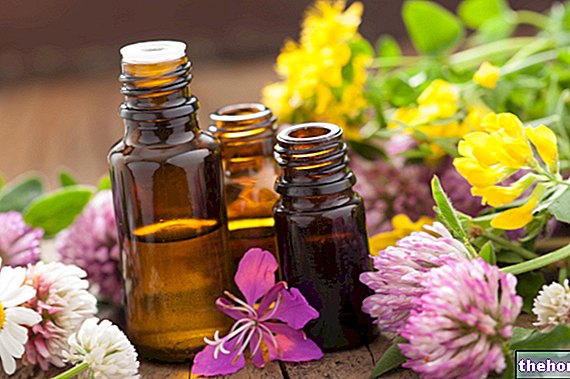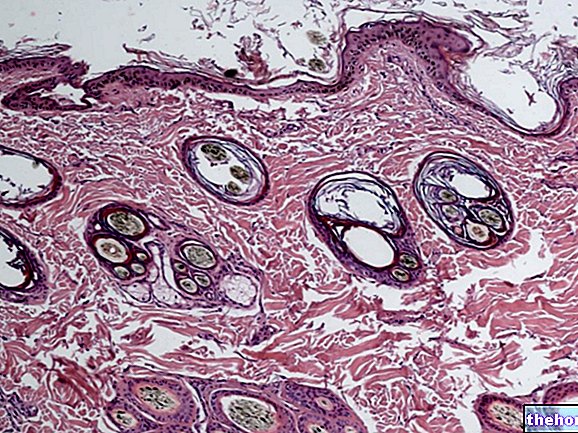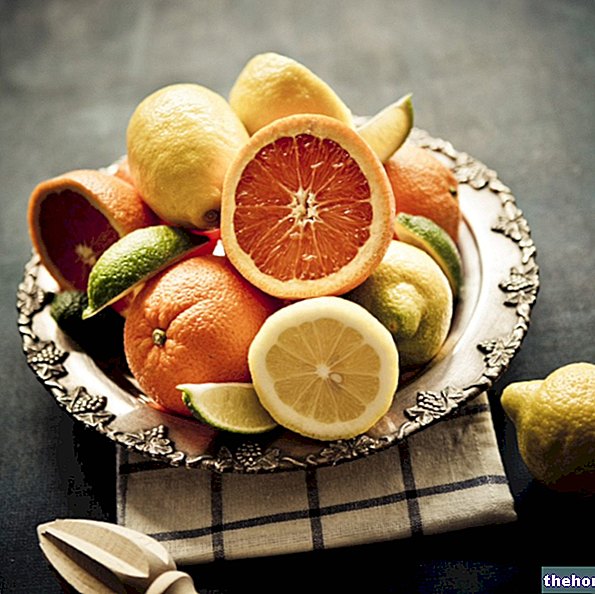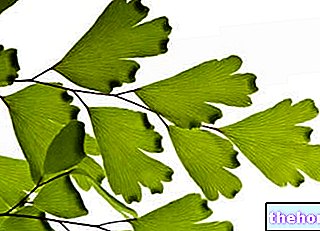Glycosides are a heterogeneous group of natural substances, widely spread in nature and united by a structure that has a sugary part, called glycone, and a non-sugary part, called genin or aglycone, linked together. Also known as heterosides and endowed with a remarkable pharmacological polyvalence, the complexed glycosides behave like real pro-drugs: once taken they undergo enzymatic hydrolysis processes that separate the sugar part from the "aglycone". generally, it represents the pharmacologically active fraction of the molecule; the sugar part, however, contributes to modulate the "intensity of" action, its toxicity and the solubility of the entire molecule; glycone, for example, is essential for the accumulation of essential oils (hydrophobic) in the aqueous compartment of the vacuoles .
Glycosides can be classified on the basis of:
1) to the sugary part (glucose, fructose, rhamnose, galactose or arabinose);
2) to the part that represents the aglycone (the various secondary metabolites);3) the type of bond that holds the aglycone to the non-sugar part;
4) the physical or pharmacological properties of the glycoside;
1) On the basis of the sugary part that characterizes them, for example, glycosides can be classified into glucosides (glycone = glucose), fructosides (glycone = fructose), rhamnosides (glicone = rhamnose), galactosides (glycone = galactose), arabinosides ( glycone = arabinose), steviosides (glycone = steviol) etc. If, on the other hand, the sugary part is composed of more sugars, these must all be named; thus, for example, we will speak of rhamnoglucoside in reference to a generic glycoside containing a glycone composed of rhamnose and glucose.
2) To highlight the type of aglycone present in the glycosidic molecule, suffixes such as antachinon- (aglycone = anthraquinone), phenol- (aglycone = phenol), flavonol- (aglycone = flavonol), coumarin- (aglycone = coumarin) are used , sterol- (aglycone = sterol) etc. Other times it is preferred to use the relative attribute, for example anthraquinone glycoside (aglycone = anthraquinone) etc.
3) With reference to the type of bond that holds the aglycone to the non-sugar part, we speak of O-glycosides (sugar linked to the aglycone through an oxygen atom), S-glycosides (sugar linked to the aglycone through an atom of sulfur), C-glycosides (sugar linked to the aglycone through a carbon atom) and N-glycosides (sugar linked to the aglycone through a nitrogen atom).

Considering the extreme variability of the chemical-physical properties and pharmacological activities, the classification of glycosides is often entrusted to the nature of the functional part (aglyconic).

Examples of glycosides and in-depth articles
Deepening: Types of glycosides
ANTHRACHINONE GLYCOSIDES: glycosides containing aglycones structurally related to the anthracene molecule; this is the case of sennosides of senna, which have a powerful laxative effect.
CARDIOACTIVE GLYCOSIDES: glycosides with powerful and specific action on the heart; this is the case of digitoxin contained in digitalis (cardiotonic effect).
CYANOGENETIC GLYCOSIDES: glycosides which by hydrolysis release hydrogen cyanide, with extremely toxic effects but with potential anticancer activities; this is the case of the amygdalin contained in the bitter almond.
PHENOLIC GLYCOSIDES: the best known is the bearberry arbutin, used in phytotherapy against bacterial cystitis and urethritis for its antiseptic properties on the urinary tract.
FLAVONIC GLYCOSIDES: aglycone is a flavonoid; we recall, for example, rutin, characteristic of Rue, with a vasoprotective effect, whose aglycone is represented by the flavonoid quercetin.
SALICYL GLYCOSIDES: salicin extracted from willow bark or meadowsweet spirea is known for its analgesic, antirheumatic and antipyretic effects; it is no coincidence that it is the basis for the production of the famous Aspirin.
SAPONIN GLYCOSIDES: the glycyrizin of licorice has gastroprotective, anti-ulcer and hypertensive properties; the ginsenosides of ginseng have an adaptogenic effect.
Select plant Fir Acacia Acerola Sorrel Yarrow Yarrow Yarrow Aconito Adatoda Garlic Agnocasto Agrimonia Alchemilla Alkekengi Aloe Altea Witch Hazel Ammi or Visnaga Pineapple Andrographis Anemone Pulsatilla Angelica Anise Star Anise Japanese Star Anise Bitter Orange Bitter Areca Arnica Harpagophytum Arpagophyte Artemisia Asteragus Basil Asparagus Asparagus Peruvian Asparagus Asparagus Asparagus Hawthorn Boldo Borage Shepherd's Purse Boswellia Bucco Butea superba Cocoa Coffee Cajeput Calamus Calamus Marigold Camedrio Chamomile Roman Chamomile Camphor Cinnamon Ceylon Maidenhair Capuchin Artichoke Cardamom Cardiac Thistle Asian Thistle Carvi Cascara Cassia Catecu Catha Cabbage Celandine Chicory Centaurea Cinnamon Cypress Celandine Chives Cypress Coca Cola Colchico Combreto Condurango Comfrey Coriander Cranberry Barberry American Chrysanthemum Cumin Turmeric Damiana Digital Dioscorea Drosera Dulcamara Dunalilella Echinacea Eder a Ephedra Elenio Eleutherococcus Helichrysum Evening primrose Horsetail Alfalfa Erica Euphrasia Erisimo Escolzia Eucalyptus Farfara Farfaraccio Calabar bean Fenugreek Fennel Phytolacca Frangola Ash Fumaria Japanese Mushrooms Galega Ganoderma lucidum Garcinia Cambogia Mulberry Gentian Broom Ginkgo Ginkgo Guipana Guipana Gynestra Ginkgo Hibelia Gymnasium Hibiscus Guarulp St. John's Wort Horse Chestnut Ispaghul Hyssop Jaborandi Kava kava Konjac Laminaria Cherry Laurel Lavender Lemongrass Lespedeza Lovage Icelandic Lichen Lemon Linen Lippia Licorice Lobelia Hops Maca Marjoram Maize Mallow Manna Marrubio Marrubio d "water Matè Melaleuca Meliloto American Lemon balm Myrtle Myrama Walnut Nutmeg Walnut vomica Olive tree Meadowsweet OnonideOpuntia Oregano Orthosiphon Nettle Poppy Papaya Parietaria Feverfew Passiflora Chilli Pepper Perilla Periwinkle Phyllanthus Plantain Picrorhiza Pilosella Pine Piscidia Podophyll Polygala Grapefruit Parsley Psyllium Pueraria mirifica Butcher's Broom Pygeum Quassia Quercus Safflower Rhubarb Ratweed Raisin Reindeer Sawbea Soy Solidago spirulina Tamarind Tansy Dandelion Badger Tea Lime Thyme Tormentilla Clover Fibrin clover Tuia Uncaria Bearberry Valerian Vanilla Mullein Verbena Veronica Viburnum Vinca Pansy Mistletoe Vine Withania Yohimbe Saffron Ginger Pumpkin Select disease Acne Juvenile Acne Rosacea Acne Acne Alupheniosis Aphithiasis Aff Breastfeeding Allergy Anemia Anguish Anxiety Arteriosclerosis Gouty arthritis Rheumatoid arthritis Arthrosis Asthenia Asthenia Sex Man Asthenia Sex Woman Blepharitis and Congiunt ivitis Eye bags Bronchitis Gallstones Kidney stones Salivary stones Baldness Androgenetic Candida Fragile hair Caries Headache Cellulitis Motion sickness Cystitis Climacteric Cholecystopathy High cholesterol Ulcerative colitis Colonoscopy Bruises Hematoma Convalescence Couperose Depression Dermatitis Dermatitis Diaperitis Dysphabetes Diarrhea Diarrhea Disease Dyspnea Dyspnea Diarrhea Fever Fibromyalgia Flatulence Phlebitis Gastritis Chilblains Gingivitis Herpes Loss of appetite Urinary infections Influenza Insomnia Hypersomnia Irritable bowel Hypertension Prostatic Prostatic hypertrophy Jaundice Laryngitis Renal lithiasis Toothache Sore throat Thinness Menopause Meteorism Mononucleosis Osteohyte disease Croopathy Osthritis Vaccination Osteo Low blood pressure Prostatitis Psoriasis Cold Breast fissures Anal fissures Gastroesophageal reflux Nasopharyngitis Small rolls (abdominal fat) Wrinkles Salmonella Senescence Premenstrual Syndrome Sinusitis Quit smoking Overweight Fatty liver Constipation Stomatitis Stress Cough High triglycerides Ulcer Burns Fragile Nails Hot flushes Warts Dizziness Herbal properties Tanning Abortive Adaptogenes Aphrodisiacs Antioxidants Anticulants Antiacticulants Analgesics Antidiarrheals Anti-edematous Antihelminthics Antiemetics Antihemorrhoids Antiphlogistics Antihydrotics Antineurotics Antioxidants Antipyretics Antirheumatics Antiscorbutics Antiseptics Antispasmodics Antiurics Aperitifs Aromatizing Astringents Balsamic Bechiche Capillarotrope Cardiotonic Disinfectants Deoxygenic Deoxygenic Dehydrating Dyes Dyesturizing Dyes Deodorants Deodorant Dyes Dyesturants Deodorant Deodorants Dyesturants Deodorants Deodorant Deodorant Deodorant Deodorants Deodorant Dyes Dyesturants Deodorant Dyes Dyesturants Deodorant Deodorant mmenagoghe Emollients Haemostatic Energetiche Epatoprotettrici Expectorants eupeptic photosensitizing Galattofore Galattofughe Galattogoghe Moisturizers Immunostimulants hypertensive Hypnotic Hypoglycemic hypotensive Irritants laxative Lenitive Narcotic Nervine Nutrients Odontalgiche Pettorali Purganti revulsive remineralizing fresheners rubefacient Scialagoghe Sedative soporific Starnutatorie stomachic stomatal Narcotics Tenifughe Toned vasoconstrictive vasodilatory vermifugal Vescicatorie vitamin vulnerary




























